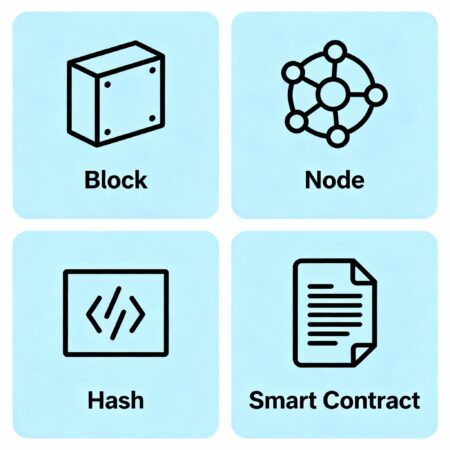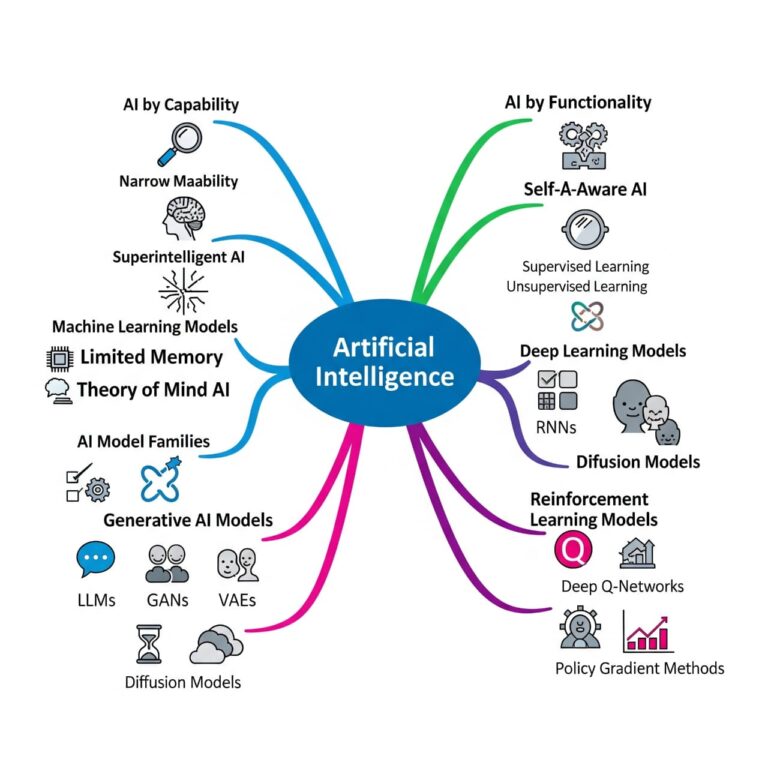Introduction to Blockchains
Understanding Blockchain: A Comprehensive Guide
Blockchain remains one of the most transformative technologies of our era, powering innovations like Bitcoin, NFTs, and Web3. While artificial intelligence dominates today’s headlines, blockchain continues to evolve as a fundamental technology that will increasingly integrate into our daily lives. Its transparency, security, and decentralized nature make it particularly attractive for applications requiring trust and immutability.
What is Blockchain?
The term BLOCKCHAIN consists of two components: BLOCK and CHAIN.
The Block
A block is a container that stores data, similar to a page in a digital notebook. Each block holds three main elements:
Transaction Data – The actual information being recorded
Timestamp – When the block was created
Cryptographic Hash – A unique digital fingerprint that identifies the block
The Chain
The chain links blocks together. It connects new blocks to previous ones through cryptographic hashes, creating an unchangeable sequence of records.
How Blockchain Works: A Simple Analogy
Imagine you and your friends create a shared digital ledger to track group expenses. This ledger uses blockchain technology and is accessible on computers belonging to everyone in your group.
The Setup
You pool money together and create a fund, which gets recorded in the ledger. To add any new transaction, you need approval from other members of the group. Only after their consensus can you record the transaction.
Recording Transactions
Each expense you record gets deducted from the fund. The record contains:
- Amount spent
- Remaining balance
- Date and time
- Other relevant details
These details collectively form a block.
The Chain Connection
This new block links to the previous block (the one containing the fund information) through a cryptographic chain. Each subsequent transaction connects to the previous one, accurately tracking the remaining balance, dates, and times. Every new transaction updates simultaneously across all computers that are part of the ledger network.
Anyone who is part of this network can access these records anytime, anywhere.
Why It’s Secure
Now, suppose someone wants to commit fraud by altering old records. Here’s why it’s nearly impossible:
If they try to change information in an old block, the hash (which includes the timestamp) would be recalculated, creating a completely different digital fingerprint
- This change would break the chain connection to all subsequent blocks
- The fraudster would need to make these changes simultaneously across all computers in the system
- The network would immediately detect the discrepancy
- This combination of cryptographic hashing, chain linking, and distributed storage makes blockchain exceptionally secure and transparent.
Key Concepts and Terminology
1. The Block 🧱
A block is a container for data. In cryptocurrencies like Bitcoin, this data includes recent transactions (e.g., “Person A paid Person B 1 Bitcoin”).
Components:
- Transaction Data – Information about what occurred (who sent what to whom, and when)
- Timestamp – The time the block was created
- Cryptographic Hash – A unique alphanumeric “digital fingerprint” for the block’s content. If even a single character changes, the entire hash changes completely
2. The Chain ⛓️
Blocks are linked together to form a chain, creating a tamper-proof ledger.
How it works:
- Previous Hash – Every new block contains the hash of the block immediately before it, creating the “chain” link.
- Immutability – Because each block references the previous block’s hash, changing any block’s data would change its hash, breaking the link to the next block and making the alteration immediately obvious. For a change to be accepted, an attacker would need to recalculate the hashes for all subsequent blocks and convince the entire network to accept the altered chain—a computationally impractical and nearly impossible task
3. Distributed Ledger Technology (DLT)
This refers to blockchain’s core architecture.
Key features:
- Decentralization – Instead of one central authority (like a bank) controlling the ledger, the blockchain is distributed across many computers (called nodes) worldwide. No single person or entity has ultimate control.
- Distributed Ledger – Every node in the network maintains an identical copy of the entire ledger. When a new block is added, all copies update simultaneously.
4. Nodes
Nodes are computers connected to the blockchain network. They store, transmit, and validate transaction data. Every node maintains a full copy of the blockchain, ensuring redundancy and security.
5. Consensus Mechanism 🤝
Since no single authority exists, the network needs a way to agree that new blocks are valid before adding them to the chain. This agreement process is the consensus mechanism.
Common types:
- Proof-of-Work (PoW) – Used by Bitcoin
- Nodes called miners compete to solve complex mathematical puzzles
- The first to find the solution proposes the next valid block
- This process is energy-intensive but highly secure
- The winning miner is typically rewarded with cryptocurrency
- Proof-of-Stake (PoS) – Used by Ethereum
Instead of solving puzzles, nodes (called validators or stakers) are chosen to create new blocks based on how much cryptocurrency they’ve “staked” (locked up) as collateral
Generally faster and more energy-efficient than PoW.
6. Cryptography 🔒
Blockchain uses advanced cryptography (the science of secure communication) to protect transactions.
Key elements:
Public and Private Keys
- Public Key – Like your bank account number, you can share it so people can send you funds
- Private Key – Like your PIN or password, it’s secret and used to digitally sign (authorize) your transactions. Losing your private key means losing access to your funds permanently.
Digital Signature
When you send a transaction, you sign it with your private key.
This proves you are the authorized owner and prevents others from forging transactions in your name.
How a Transaction Works: Step-by-Step
Initiation – User A creates a transaction (e.g., sending money to User B) and signs it using their private key.
Broadcast – The transaction is broadcast to the entire blockchain network of nodes.
Validation – Nodes, miners, or validators verify the digital signature and confirm that User A has sufficient funds to complete the transaction.
Block Creation – Valid transactions are grouped together into a new block.
Consensus – The network runs its consensus mechanism (like PoW or PoS) to agree on the block’s validity.
Chaining – The validated block is cryptographically linked to the last block in the chain by including the previous block’s hash.
Distribution – The new, approved block is added to the chain, and all nodes update their copy of the distributed ledger. The transaction is now permanently and immutably recorded.
Why Does Blockchain Matter?
Blockchain technology offers a revolutionary approach to digital trust and record-keeping.
- Decentralized System – You don’t need to trust a single person or institution. You trust the system—the code and the cryptography.
- Transparent – Anyone can view transactions on public blockchains, making the system verifiable and auditable.
- Secure & Tamper-Proof – Changing recorded data is nearly impossible due to the combination of cryptography and decentralization.
- Efficient – By removing middlemen, blockchain can potentially speed up processes and reduce costs in many industries.
While blockchain is most famous for cryptocurrencies like Bitcoin, its potential applications are vast: supply chain tracking, voting systems, digital identity verification, real estate records, healthcare data management, intellectual property rights, and much more. It’s a foundational technology that could fundamentally change how we interact and conduct transactions on the internet.
Common Misconceptions
Before we conclude, let’s clarify some important points:
Blockchain ≠ Cryptocurrency
Cryptocurrency is just one application—albeit the most widely adopted—of blockchain technology. Cryptocurrency uses blockchain to link digital assets with tokens, creating a system for secure trading and transactions. However, blockchain has many other use cases beyond digital currencies.
Not Always Public
Organizations or individuals implementing blockchain technology have the option to make it completely private. They can limit access to authorized parties only. These are called private blockchains or permissioned blockchains, as opposed to public blockchains like Bitcoin and Ethereum where anyone can participate.
Conclusion
Blockchain represents a paradigm shift in how we think about trust, transparency, and data integrity in the digital age. While it’s still an evolving technology with challenges to overcome (such as scalability and energy consumption), its potential to transform industries and create new possibilities is undeniable. Understanding blockchain is becoming increasingly important as it continues to integrate into various aspects of our technological infrastructure.
Whether you’re interested in cryptocurrencies, exploring new business applications, or simply curious about emerging technologies, blockchain offers a fascinating glimpse into the future of decentralized systems and digital innovation.



